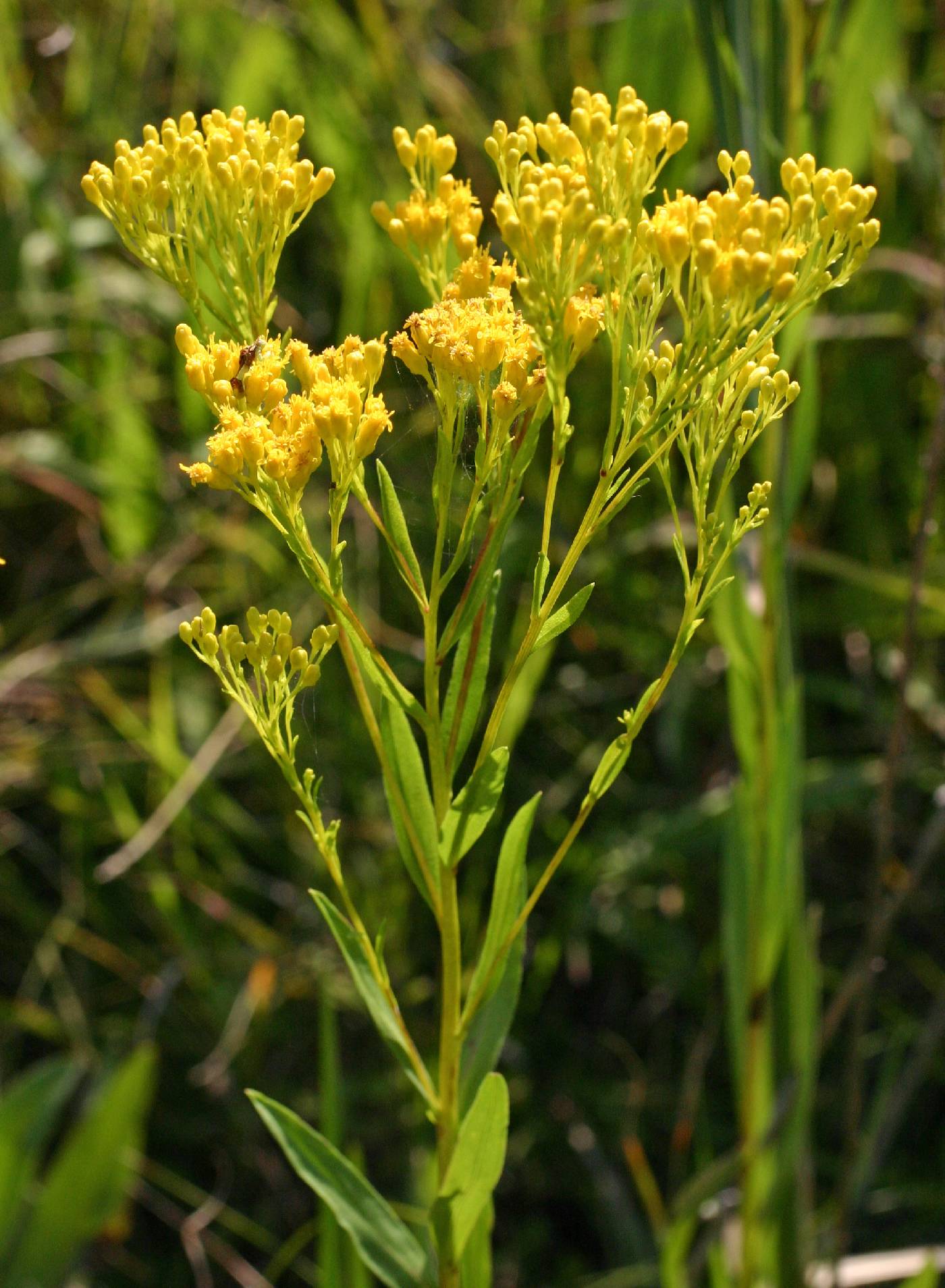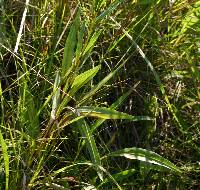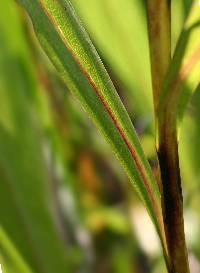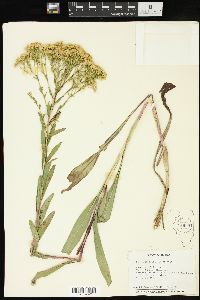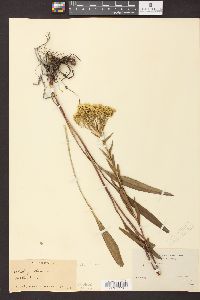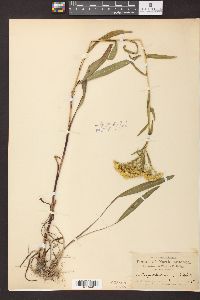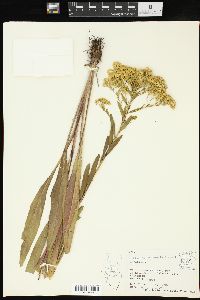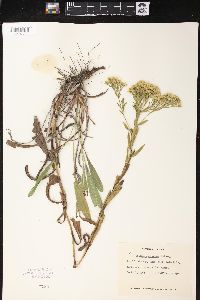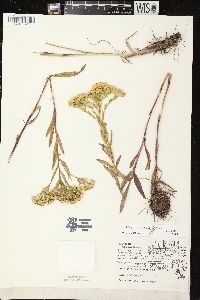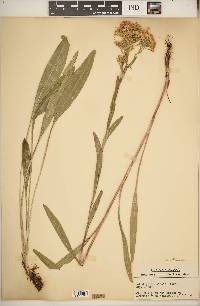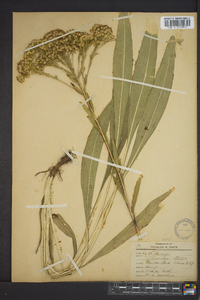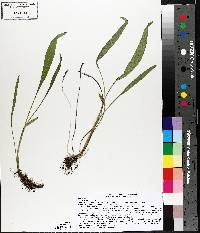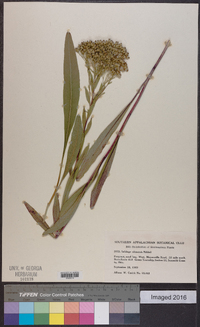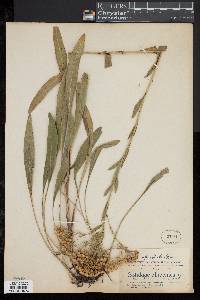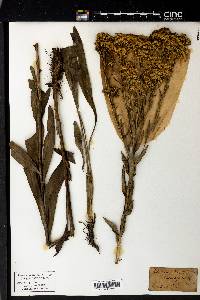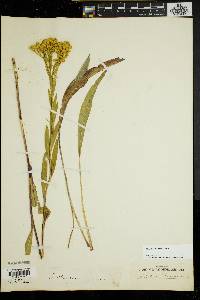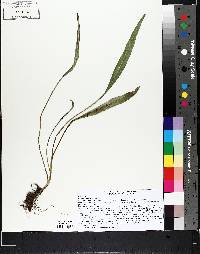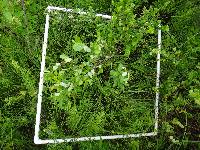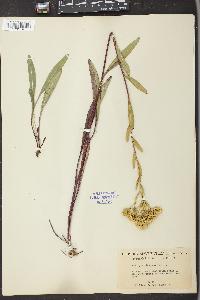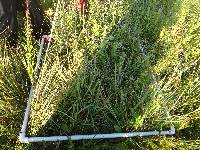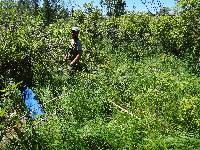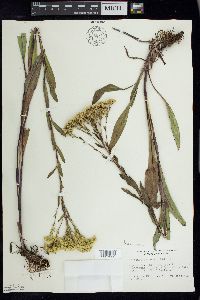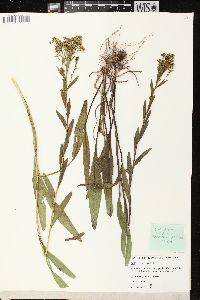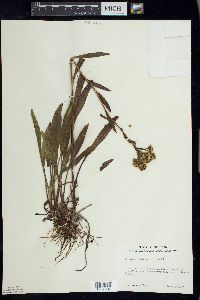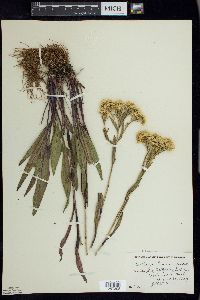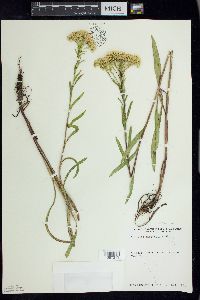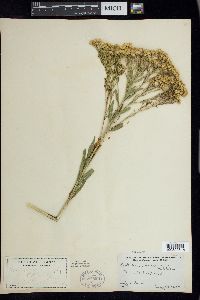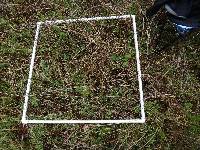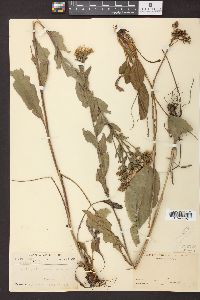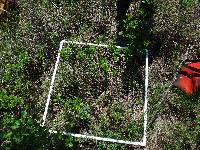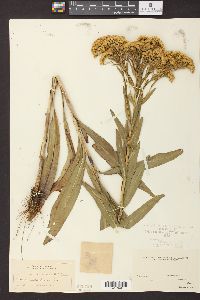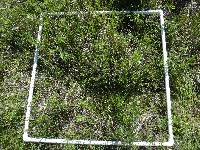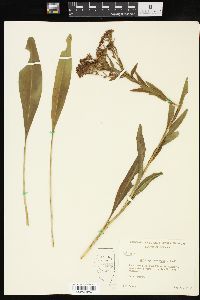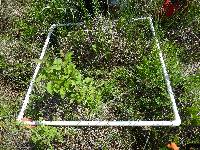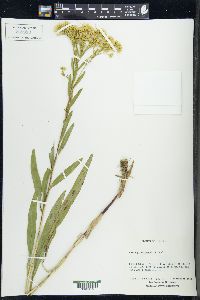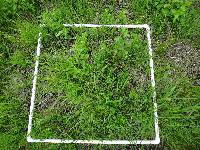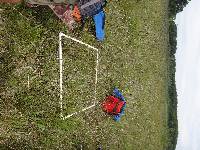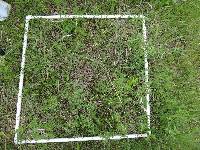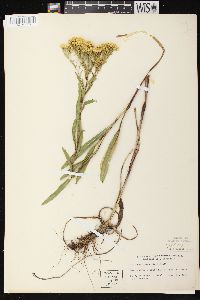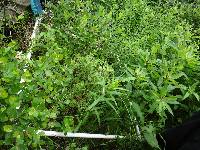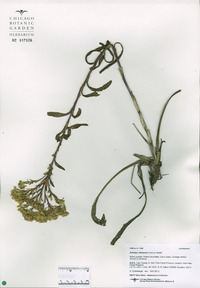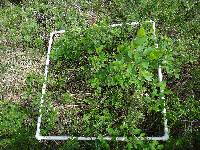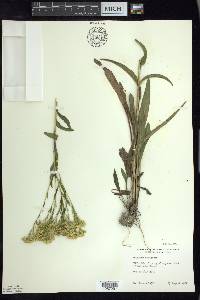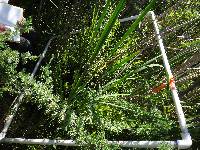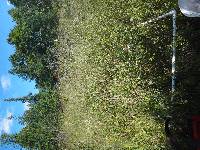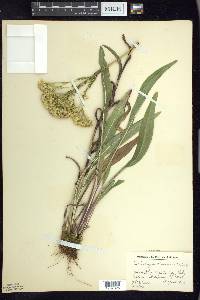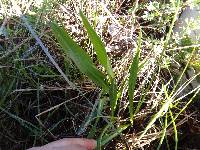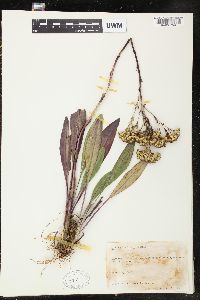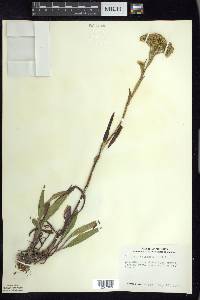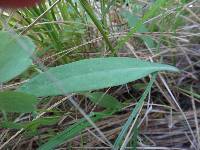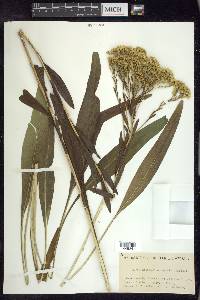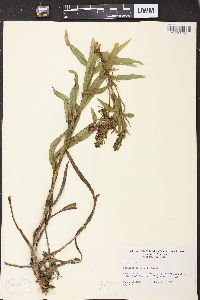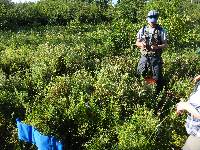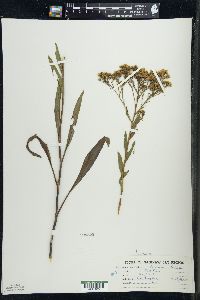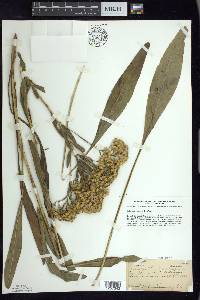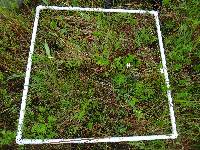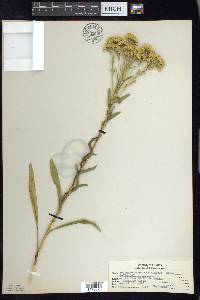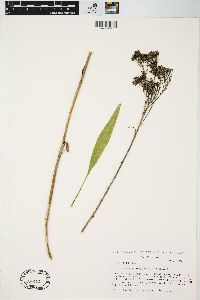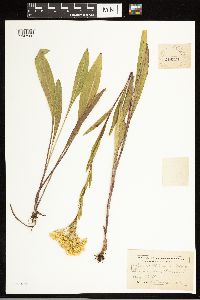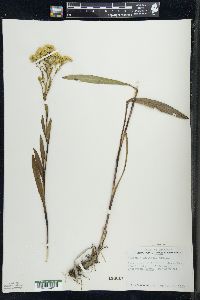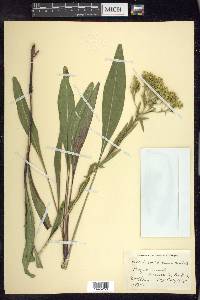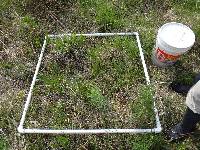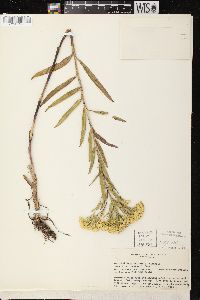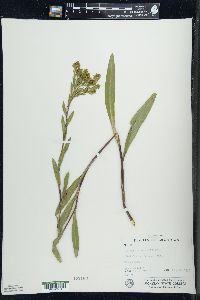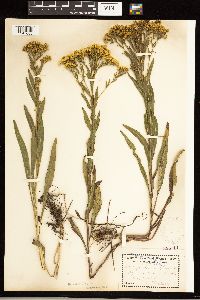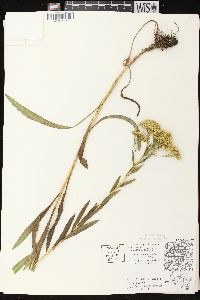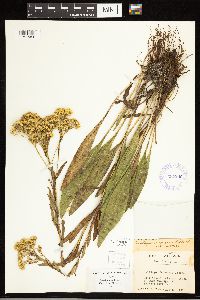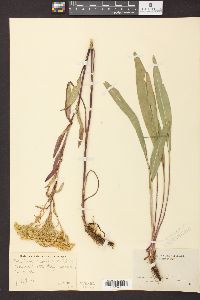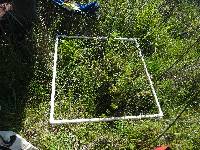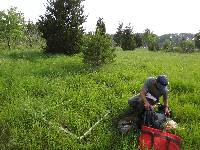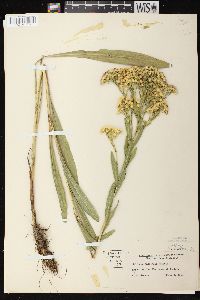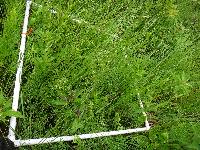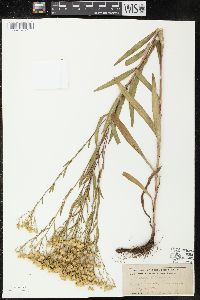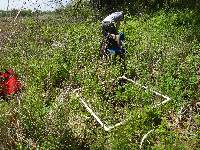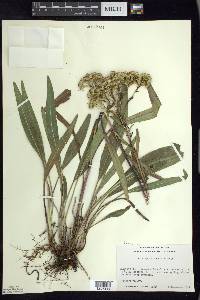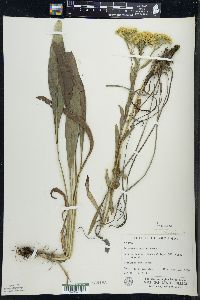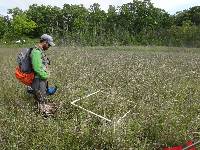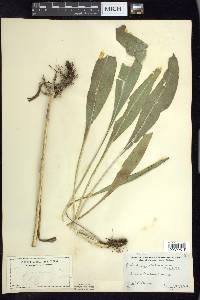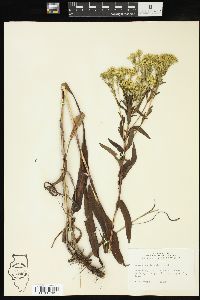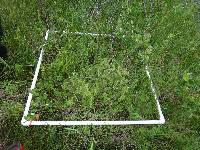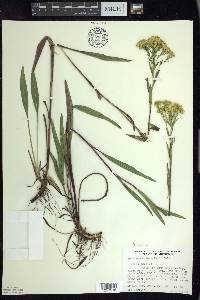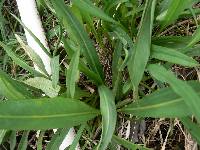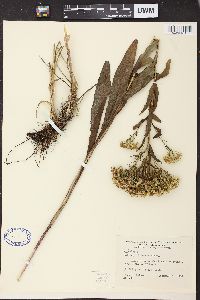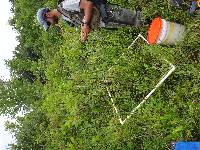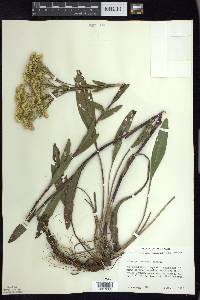
|
|
|
|
Family: Asteraceae
Ohio Goldenrod
[Aster ohioensis (Riddell) Kuntze] |
Plants 40-100 cm; caudices densely rooting, branching; vascular bundles and petiole bases marcescent (attached to old stems for more than a season). Stems 1-10+, erect, slender to stout (tall shoots), glabrous. Leaves: basal often persistent, also present as new rosettes at flowering, tapering to winged petioles to 250 mm, blades narrowly ovate to lanceolate, 50-150 × 15-45 mm, apices obtuse to acute, faces glabrous; proximal cauline similar, reduced distally (petioles becoming less developed); distal sessile, blades prominently 1-nerved, ovate to lanceolate, 75-100 × 8-12 mm, much reduced distally, margins entire, flat, apices acute. Heads 10-500+ in corymbiform arrays, branches glabrous. Peduncles 6.3-8.5 mm, glabrous; bracteoles 3, linear to lanceolate, sometimes grading into phyllaries. Involucres campanulate, 4-5 mm. Phyllaries (14-18) in 3-4 series, broadly linear to ovate, unequal, obtuse, obscurely striate. Ray florets 6-8; laminae 4.6-5 × 0.5-0.7 mm. Disc florets 8-20; corollas 4-4.5 mm, lobes 0.6-1 mm. Cypselae (obconic) 1.6-2.2 mm, glabrous; pappi 2.5-3 mm (apically clavate). 2n = 18. Flowering Sep-Oct. Marshes, wet sand dunes, along rivers; 100-300 m; Ont.; Ill., Ind., Mich., N.Y., Wis. Solidago ohioensis is most likely to be confused with S. riddellii, which has folded and multinerved leaves, and S. houghtonii, which has arrays with few large heads. Solidago ohioensis is found in the southwestern Great Lakes area and the flatlands region to the southwest. Hybrids between S. ohioensis and S. ptarmicoides occasionally occur where the two parents are sympatric. Those hybrids were described as S. ×krotkovii B. Boivin [Oligoneuron ×krotkovii (B. Boivin) G. L. Nesom] and can be similar to S. houghtonii.
Plants 4-9 dm from a stout branched caudex, glabrous except for the scabro-ciliate lf-margins; lvs basally disposed, flat, not triple-nerved, the larger ones with lance-elliptic or narrowly elliptic, slightly toothed to entire blade 8-22 cm נ8-50 mm, often exceeded by the long petiole; cauline lvs few or rather numerous, the middle ones sessile or short-petiolate, 6-12 times as long as wide; infl corymbiform, the heads numerous, rarely less than 50, often several hundred; invol glabrous, 4-5 mm, its bracts firm, obtuse or broadly rounded, ±striate; rays 6-8, short; disk-fls ca 20; achenes glabrous, 3-5-angled, the angles scarcely or obscurely nerved; 2n=18. Swamps, beaches, and other moist places; c. N.Y. and s. Ont. to Ill., Mich., and Wis. Gleason, Henry A. & Cronquist, Arthur J. 1991. Manual of vascular plants of northeastern United States and adjacent Canada. lxxv + 910 pp. ©The New York Botanical Garden. All rights reserved. Used by permission. From Flora of Indiana (1940) by Charles C. Deam infrequent in marly marshes In the lake area and very local in springy places south of it. It is usually common where it occurs. I once saw a colony of about five acres on the wide marl border of the south side of Lake Pleasant which is located just south of the Michigan State line in Steuben County. Only the most tolerant calciphiles were associated with it such as Triglochin maritima, Eleocharis pauciflora var. fernaldii, Juncus brachycephalus, and Lobelia kalmii. This species is always indicative of a limy soil and if the soil is not too alkaline Lobelia kalmii and Parnassia glauca will be found with it. …… Indiana Coefficient of Conservatism: C = 10 Wetland Indicator Status: OBL |
This project was made possible in part by the Institute of Museum and Library Services [MG-70-19-0057-19].
Powered by Symbiota

